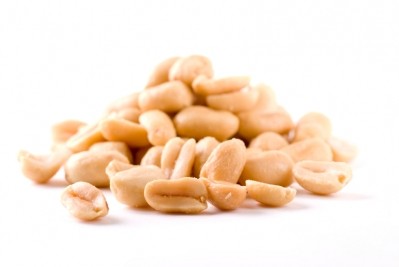Researchers aim to improve ‘may contain’ allergen advice

In a study published in the Journal of Allergy, Asthma and Clinical Immunology, the researchers examined responses to small doses of five common food allergens – peanut, hazelnut, celeriac, fish, and shrimp – among 436 allergic consumers.
“What we wanted was to find a level of allergen which would only produce a reaction in the most sensitive ten percent of people,” said lead researcher Professor Clare Mills.
Food manufacturers must label 14 allergens under EU law – peanuts, tree nuts, soybeans, mustard, eggs, lupin, milk, fish, cereals containing gluten, sesame, celery, sulphur dioxide, molluscs and crustaceans. For products that do not intentionally contain these as ingredients, current industry best practice is simply to take all necessary precautions to avoid cross contamination and flag up the possibility of allergens' unintentional presence.
The European Academy of Anaphylaxis and Clinical Immunology (EAACI) has been pushing for stricter EU legislation on allergen labelling, saying that current laws on ‘may contain’ labelling are insufficient to protect those with food allergies.
Consistency
Mills said: “This sort of data can then be used to apply a consistent level of warning to food products. What we’d like to see are warnings which tell people with allergies to avoid certain products completely or just apply to those who are most sensitive.”
She told FoodNavigator that when it came to assessing a tolerable level of risk, taking into account the most sensitive 5% or even 1% of the allergic population was likely to be more realistic – although analytical methodologies may not be adequate to detect allergens at such low levels.
Shrimp surprise
The most sensitive 10% of participants reacted to 1.6-10.1 mg of hazelnut, peanut and celery protein, and to 27.3 mg of fish protein. However, the researchers were surprised by the high level of cooked shrimp protein required to provoke a reaction among the most sensitive consumers – 2.5 grams.
“If you have got good cleaning for a processed food, you shouldn’t ever have to have a precautionary label on a product for shrimp,” said Mills, although she said that raw shrimp may have a different effect.
She added that many food companies have reviewed their allergen labelling in light of the new Food Information for Consumers (FIC) regulation.
“For food labelling, responsible manufacturers are assessing the traces of potential allergenic ingredients,” she said.
“Results of surveys point to the confusion that there is in the community. The majority of foods that carry the label don’t contain the allergen.”
Source: Journal of Allergy, Asthma and Clinical Immunology
DOI: http://dx.doi.org/10.1016/j.jaci.2014.10.047
“How much is too much?: Threshold dose distributions for five food allergens”
Authors: Mills et al.
























